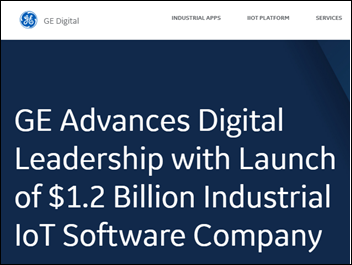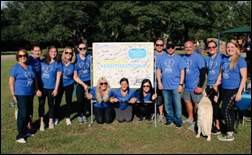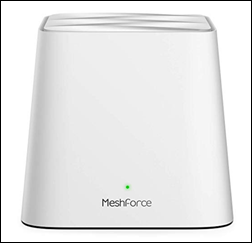HIStalk Interviews Kevin MacDonald, CEO, Kit Check
Kevin MacDonald is co-founder and CEO of Kit Check of Washington, DC.

Tell me about yourself and the company.
I’ve been doing RFID and helping various parts of all kinds of different supply chains for 20 years. I started with Sun Microsystems, did a consulting company, and then I started Kit Check in 2011. A friend of my wife was a pharmacist. She was on crash cart duty and having an awful time. I said, boy, there’s an awfully difficult and hard to manage supply chain for drugs inside the hospital, not to mention outside. I think we can make the pharmacist’s life better and more efficient while making the drug spend cheaper and the end result safer.
How are hospitals using Internet of Things and RFID?
You typically hear about RFID in hospitals for tracking things that you don’t want to throw away, like capital equipment and people. Real-time location systems are kind of expensive. We focus on things that you actually do throw away, consumables such as, in this case, drugs. There’s a great ROI there. We are approaching 500 hospitals now and growing very quickly. We are thrilled that we’re now tracking more than one new medication every second, but there’s still a lot of room to grow.
The potential benefit in labor savings and medication tray dispensing accuracy is obvious, but how would a hospital pharmacy use your system to manage a drug recall or manufacturer shortage?
Imagine you have 150 carts across the hospital. Something is recalled. You’re going to send a tiger team of pharmacists around, taking hours or probably days for many people to open up and check each individual cart. Our system knows every single vial and every single place. We know exactly where to go to address recalls, where you do and don’t need to go. That multi-day process goes down to a matter of minutes, unless of course the recalled drug is absolutely everywhere, in which case you need to go to all the carts anyway.
As we’ve expanded to so many hospitals, we have a system where if two hospitals enter a recall, we scan everyone else’s inventory. We say, hey, you have a drug that was identified as recalled by other hospitals. We’re often ahead of both FDA and RASMAS in recalls.
Do you see other potential for network-effect type usage beyond a single hospital?
There are things around benchmarking. Everyone is constantly trying to figure out, what do I put in a crash cart? What do I put on the anesthesia floor? It’s typically a discussion or a debate rather than a fact-based situation. We can bring data about both what’s in your hospital as well as what others are doing. That makes it a clearer debate.
With controlled substances, the more data we have in the system across hospitals, the more we can learn additional patterns of how people divert medications. We can then make everyone smarter along the way. It’s incredible how many ways people find to divert controlled medications. Having more and more hospitals on the system allows them to get smarter and smarter every day.
How does your Bluesight for Controlled Substances improve on software provided by drug dispensing cabinet vendors?
The biggest difference is that it takes in multiple data sources and then layers on workflow to do 100 percent closed-loop auditing so that it is comprehensive. It also brings in data from the EHR and other systems and then layers machine learning and AI on top.
Dispensing cabinet reports can tell you that a nurse dispenses twice as much fentanyl as another nurse, but there might be a good reason for that. Perhaps they’re doing a cardiac surgery case in the OR. We can look at all patterns, including locations, waste buddies, and time between events, whether it’s dispense-and-admin or dispense-and-return. We understand the situations that are riskier.
At the core, we’re doing three things – identifying potential risks, adding workflow to make it actionable, and making it comprehensive by enhancing dispensing cabinet information with data from EHRs and other sources, such as time and attendance systems.
At least two nurses have confessed to killing dozens of inpatients using ADC-dispensed drugs, yet weren’t caught for years even though the correlation to specific drug withdrawals or the number of codes called on their work shifts seemed obvious after the fact. Is that business case for your system even though it’s hopefully a rare event?
It’s not easy to prevent, for sure. It is prevalent. Studies have shown that as many as 8 percent — one in 12 nurses, anesthesia providers, and pharmacists — will end up diverting controlled substances. If you take a trip to the hospital and touch a lot of different folks, you have a pretty high probability that some of them are diverting.
That goes along a spectrum. Typically, someone starts out slowly. They were playing soccer or something on the weekend and got injured, then decided to do a little pain relief. It slowly builds and gets out of control. Any given hospital at any given time almost certainly has diverters. If they aren’t finding them — which, by the way, most aren’t — there’s risk to patients.
Software vendors are claiming that their old products are suddenly using machine learning and AI when they’re actually just running queries. Is your system actually independently learning from the data it sees?
Over time, it’s learning individual patterns and behaviors as well as group patterns and behaviors. At the macro level, we look at several trends across all hospitals. We add in, for example, a waste buddy report, pain score report, or something like that across hospitals. A 100-bed community hospital is very different from an 800-bed academic center. Even between academic medical centers, the practice habits are going to be different.
We learn the practice habits at that facility and for groups of people. If you are a NICU nurse, your patterns will be different from an anesthesiologist or investigational radiologist. We learn over time what is a normal pattern and what is an abnormal pattern, We’re also looking at individuals to see if their behavior is changing over time and learning what is normal for them.
Unlike some other things where it’s just, “Let’s take a bunch of data and run some reports,” there actually machine learning and AI happening here.
That would require the system to also know when someone was positively identified as a diverter so it would know it predicted correctly. Is that information provided to the system?
We call it an investigative workflow. We identify the folks who are more risky. We’ll never say that someone is absolutely diverting, because there may be something strange that happened that caused them to spike on whatever the set of tools are.
Once the hospital starts an investigation, we give them the capability to drill in transaction by transaction. They can start conversations with management. They can then go further in the investigation workflow and escalate up to the time where someone is engaged with HR, rehab, or potentially criminal proceedings. But hospitals usually try to help their providers recover instead of instituting criminal proceedings.
We end up learning when all of these things happen. We also see patterns that we’ve seen elsewhere that we might highlight more, or other things that we want to take a look at and then apply to the rest of the hospitals in the dataset.
Your company has gotten pretty big, but it sits between EHR vendors and tray and drug dispensing technology vendors, both of which provide information your product needs even though they may have similar offerings. Are you concerned that being successful might cause those big companies to take action in developing a competing product or cutting off access to their information?
Our advantage is that we are big enough to have a good-sized engineering team, but we’re small enough to be nimble. We release new code and new functions every two weeks. Those large vendors are often on an annual cycle. It just takes forever. You need constantly update the patterns and the data feeds you’re looking at.
We think we’re well positioned, and in terms of the data we need, it’s fairly standard. We can do an HL7 interface, but most folks end up pulling standard reports out of both their EHR and their dispensing cabinets that they end up using for other purposes. I guess those companies could try to do something anti-competitive, but for the most part, we’re just using what’s already out there.
One of the most anti-competitive actions they could take would be simply to whip out their large checkbook and buy you out.
We’ve got a lot of room to develop. Our core is helping hospitals do those three things that we talked about — saving money on drug spend, being safer and more compliant, and being more efficient. Those all come down to having visibility at the item level. We started in the procedural spaces, where the hospitals were blind. Even if they had a dispensing cabinet, typically the dispensing cabinet counts were way off. We got almost perfect visibility in a place where they were blind.
We now have added the nursing floors and the other areas by our learning controlled substances. Over time, we’re going add more and more tools that help the hospital automate things, and again, do those three things. We are venture backed and we’re going to grow and become a bigger company, but we’ve got a lot of growing to do in the mean time.
How has the company changed in moving from a business that you personally bootstrapped, sweating those first sales because hospitals take forever to make decisions, to become a significant, venture-funded player?
It ha created a lot of opportunity. My co-founder and I were cold-calling. Neither of us had worked with hospitals. Honestly, knowing now how bad the hospital sales cycle is, I’m not sure that we would have started the business.
Having scale really helps. With the venture rounds, our investors have been super supportive. They believe in what we’re doing.
We’ve been able to build a decent-sized engineering team. Compared to the dispensing cabinet vendors of the world, I think the amount of engineering that we’re putting on software is bigger than some of the publicly traded guys. We can hire amazing people because we’re doing important work. It’s easy for people to get behind that important work as we grow. That’s the most interesting thing about scale.
We were at the American Society of Health-System Pharmacists Midyear conference recently. It was really cool to see all the customers out there. We’re not, as one director of pharmacy called us years ago, two nerds in a metal box any more. We’ve got scale and products and we’re solving important issues for the pharmacy. We’ve proven that. We do a good job at it.
Do you have any final thoughts?
We’re super excited to be helping our hospital partners, and going forward, not even just hospital partners. We’re working on getting drugs already tagged to the hospital and being able to have full traceability in the supply chain to allow those hospitals, again, to be safer, be more efficient, and lower their drug spend.















































































It doesn't look like much more than a computer facing a wall!!